Microcosm (CERN)

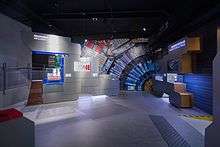


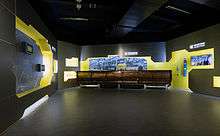

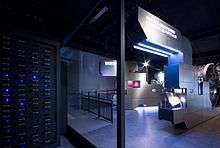
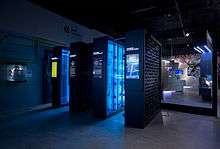

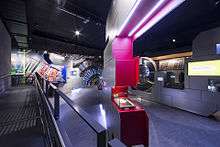
Microcosm is an interactive exhibition presenting the work of the CERN particle physics laboratory and its flagship accelerator the Large Hadron Collider (LHC).
The exhibition displays many real objects, taking visitors on a journey through CERN’s key installations, from the Hydrogen bottle, source of the protons that are injected into the LHC, through the first step in the accelerator chain, the Linac, on to a model of a section of the Large Hadron Collider including elements from the superconducting magnets. Visitors can interact with the displays to try their hand at the controls of a particle accelerator – simulating the acceleration of protons in the LHC and bringing them into collision inside the experiments.
The exhibition continues with a 1 :1 scale model of a complete slice through the CMS experiment at the LHC. The computing section displays some of the Oracle data tapes used to store the 30-40 petabytes of data produced yearly by the experiments, made available for analysis using the LHC Computing GRID.
The annex to the exhibition contains other historical artifacts such as the central tracker from the UA1 detector, which ran at the Super Proton Synchrotron at CERN from 1981 to 1984, and helped discover the W and Z bosons.
Microcosm is located at CERN in the Canton of Geneva, Switzerland, near the town of Meyrin. Entrance is free, without reservation, open 6 days a week.[1]
The current exhibition officially opened in January 2016.[2] Contents were developed by CERN in collaboration with spanish design team Indissoluble.[3]
Microcosm garden
The Microcosm garden features several large components of old CERN experiments.
 The entire garden
The entire garden
 An RF cavity from the Large Electron-Positron Collider
An RF cavity from the Large Electron-Positron Collider Initial stages of an old particle accelerator
Initial stages of an old particle accelerator
References
- ↑ "Practical Information | MICROCOSM". microcosm.web.cern.ch. Retrieved 2016-01-18.
- ↑ "La nouvelle expo du Cern vous rend presque chercheur". www.ledauphine.com. Retrieved 2016-01-20.
- ↑ indissoluble.com (2012-12-21). "Indissoluble. We create spaces that communicate. Temporary architecture, interior design, interaction and assembling for exhibitions, stands and museums". indissoluble.com. Retrieved 2016-01-18.
External links
| Wikimedia Commons has media related to Microcosm (CERN). |